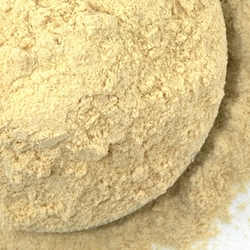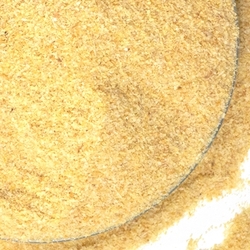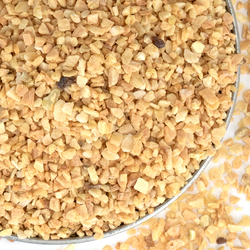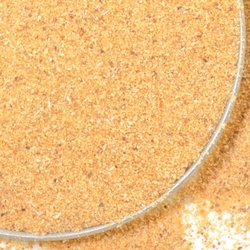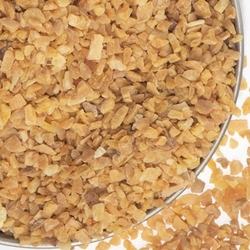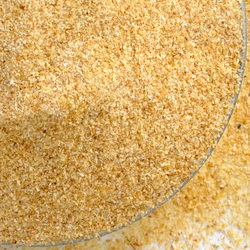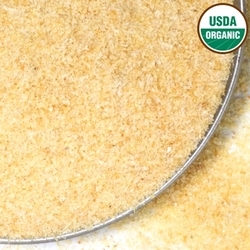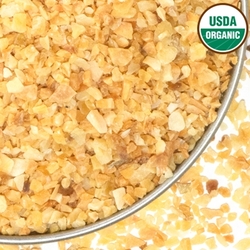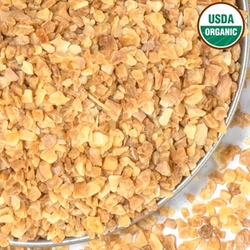Garlic
The distinctive taste and smell of garlic is known and celebrated the world over, a standard addition to nearly every cuisine across the globe. Garlic is a member of the lily family, along with other alliums like leeks, shallots, onions, and chives. Garlic’s sharp flavor and lingering odor are fueled by potent sulfuric compounds that activate once a garlic clove is sliced or crushed, exposing its heart to air.
Garlic can be used fresh, roasted, sauteed, braised, sliced, chopped, or mashed. When it is dried the flavor concentrates, making the mince, granules, and powder even more pungent than the fresh products.
1 fresh garlic clove = 1/8 teaspoon of garlic powder or ¼ teaspoon of granulated garlic or ½ teaspoon of minced garlic.

